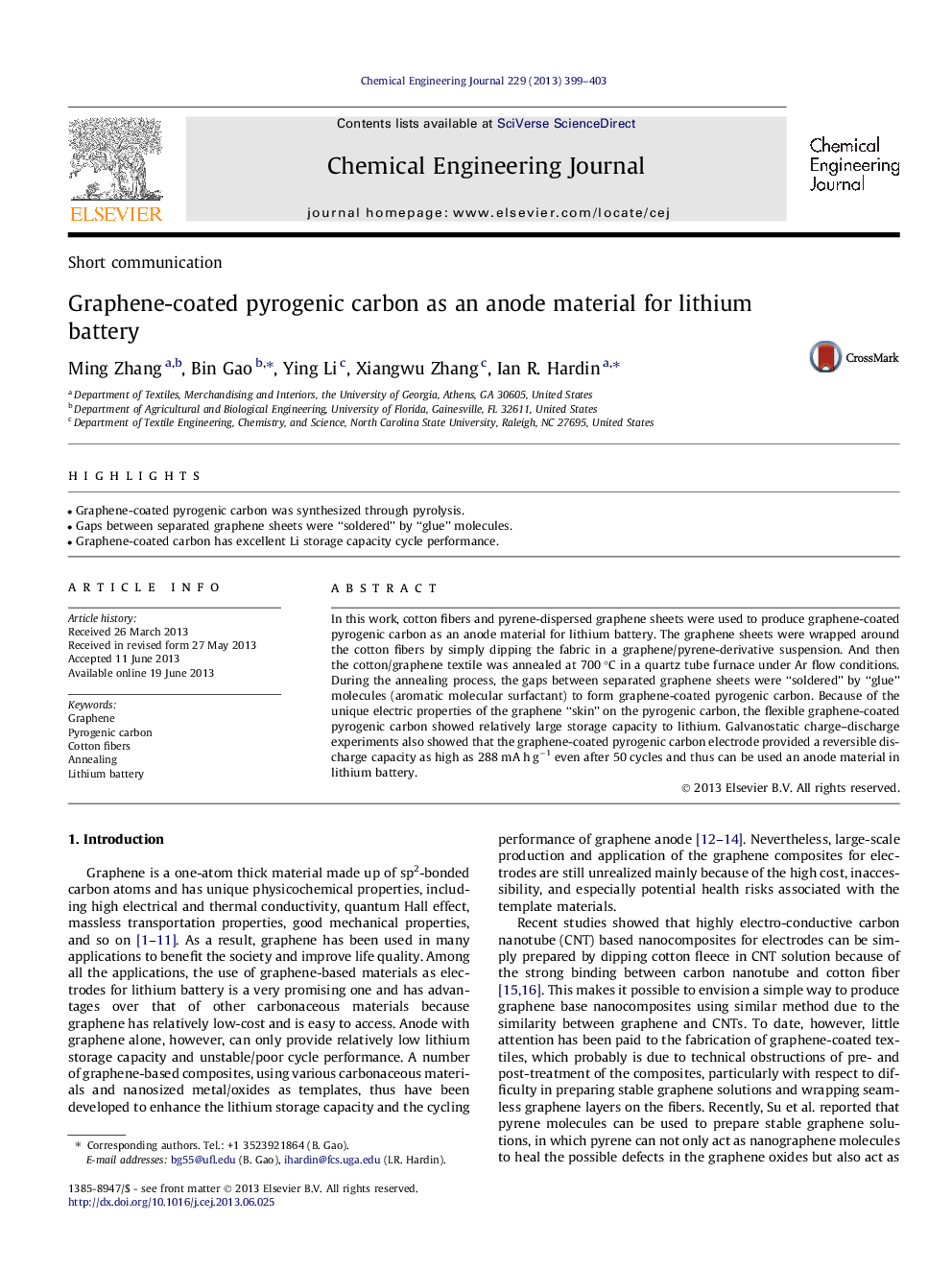| Article ID | Journal | Published Year | Pages | File Type |
|---|---|---|---|---|
| 6587400 | Chemical Engineering Journal | 2013 | 5 Pages |
Abstract
In this work, cotton fibers and pyrene-dispersed graphene sheets were used to produce graphene-coated pyrogenic carbon as an anode material for lithium battery. The graphene sheets were wrapped around the cotton fibers by simply dipping the fabric in a graphene/pyrene-derivative suspension. And then the cotton/graphene textile was annealed at 700 °C in a quartz tube furnace under Ar flow conditions. During the annealing process, the gaps between separated graphene sheets were “soldered” by “glue” molecules (aromatic molecular surfactant) to form graphene-coated pyrogenic carbon. Because of the unique electric properties of the graphene “skin” on the pyrogenic carbon, the flexible graphene-coated pyrogenic carbon showed relatively large storage capacity to lithium. Galvanostatic charge-discharge experiments also showed that the graphene-coated pyrogenic carbon electrode provided a reversible discharge capacity as high as 288 mA h gâ1 even after 50 cycles and thus can be used an anode material in lithium battery.
Related Topics
Physical Sciences and Engineering
Chemical Engineering
Chemical Engineering (General)
Authors
Ming Zhang, Bin Gao, Ying Li, Xiangwu Zhang, Ian R. Hardin,
